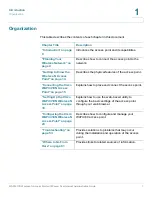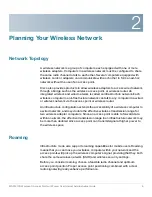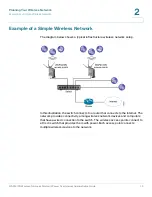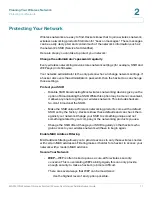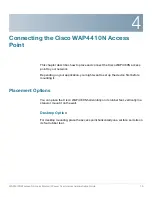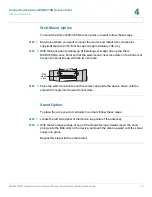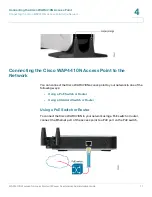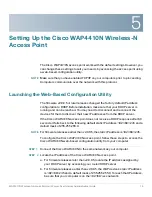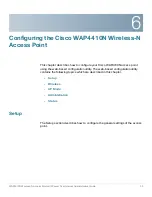
2
WAP4410N Wireless-N Access Point with Power Over Internet Administration Guide
8
Planning Your Wireless Network
Network Topology
A wireless network is a group of computers, each equipped with one or more
wireless adapters. Computers in a wireless network must be configured to share
the same radio channel to talk to each other. Several computers equipped with
wireless cards or adapters can communicate with each other to form an ad-hoc
network without the use of an access point.
Cisco also provides products to allow wireless adaptors to access wired network
through a bridge such as the wireless access point, or wireless router. An
integrated wireless and wired network is called an infrastructure network. Each
wireless computer in an infrastructure network can talk to any computer in a wired
or wireless network via the access point or wireless router.
An infrastructure configuration extends the accessibility of a wireless computer to
a wired network, and may double the effective wireless transmission range for
two wireless adapter computers. Since an access point is able to forward data
within a network, the effective transmission range in an infrastructure network may
be more than doubled since access point can transmit signal at higher power to
the wireless space.
Roaming
Infrastructure mode also supports roaming capabilities for mobile users. Roaming
means that you can move your wireless computer within your network and the
access points will pick up the wireless computer’s signal, providing that they both
share the same wireless network (SSID) and wireless security settings.
Before you consider roaming, choose a feasible radio channel and optimum
access point position. Proper access point positioning combined with a clear
radio signal will greatly enhance performance.







